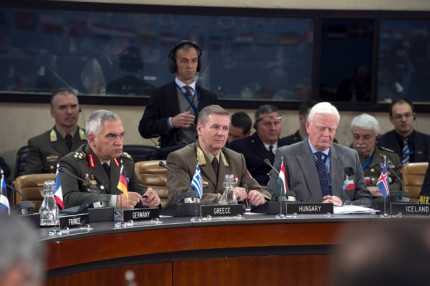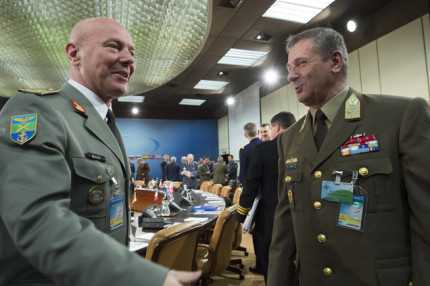General Benkő: parallel to the troops reduction in Afghanistan more personnel is to deploy in Kosovo
Szöveg: honvedelem.hu / MTI | 2014. január 30. 9:01For Hungary the security of Western Balkans is of particular importance therefore a part of the Hungarian contingent currently involved in the International Security Assistance Force in Afghanistan, which is to terminate this year, is to be redeployed in KFOR operations in Kosovo, Hungarian Chief of Defence General Tibor Benkő declared at the two-day meeting of NATO Chiefs of Defence in Brussels on Thursday 23rd January.
In the Western Balkans Hungarian troops are deployed not only in the framework of the NATO operation in Kosovo but also in the European Union-led EUFOR Operation ALTHEA in Bosnia and Herzegovina. Next year, when in Afghanistan ISAF will be replaced by a new multinational mission focusing on training and mentoring instead of combat missions, Hungary intends to take part in that with approximately 100 people. Hungary maintains its policy to deploy around 1,000 troops in foreign missions.

General Tibor Benkő at the meeting of Chiefs of Defence
In his interview given to the Hungarian News Agency General Benkő called attention to the fact that although the Serbia-Kosovo agreement is of determining significance for settling the state of affairs in Northern Kosovo it will take a long time to eliminate the existing political and ethnic problems. Therefore – the CHoD added – the third pre-planned reduction of the deterrence force of KFOR is not on the agenda.
At the meeting of the NATO Military Committee, chaired by the former CHoD of Denmark General Knud Bartels, the Chairman of the Committee, the military leaders of the member states discussed a number of other issues besides the operational situations in Afghanistan and Kosovo. One discussion point was that the new command structure achieved its initial operational capability last December. With regard to personnel the Hungarian Chief of Defence declared that Hungary met the expectations of the Alliance through the rotations of the Hungarian troops in 2013 and will do so in 2014 and 2015 as well.
The Chiefs of Defence discussed the situation of Mediterranean Dialogue too. In this respect General Benkő noted that due to the risk presented by the waves of refugees Hungary is also interested in the peace and stability of the Mediterranean region. Another point on the agenda of the Military Committee was the issue of the so called connected forces. With the termination of ISAF there will be a growing need for the capacity of leading the connected forces of various countries in the new command structure too therefore the cohesion of troops should be provided through common training, preparation and exercising.

Chief of Defence of Albania Major General Jeronim Bazo and General Tibor Benkő
The Hungarian Chief of Defence said that in 2015 there will be a large-scale military exercise code-named Trident Juncture with the participation of Hungarian military personnel. As the same time Hungary will hold a military exercise – Bátor Harcos (Brave Warrior) – on domestic grounds in familiar environment, which will be connected to multinational military exercise Trident Juncture. In the opinion of General Benkő foreign countries should also be invited to take part in the military exercise in Hungary.
Responding to reporters’ questions about the development priorities in the case of a defence budget increase after 2015 General Benkő mentioned the development of operational capacities and survivability of individual soldiers, and the maintaining and improvement of rotary wing capacities – that is helicopters – on the second place.
Photos by nato.int